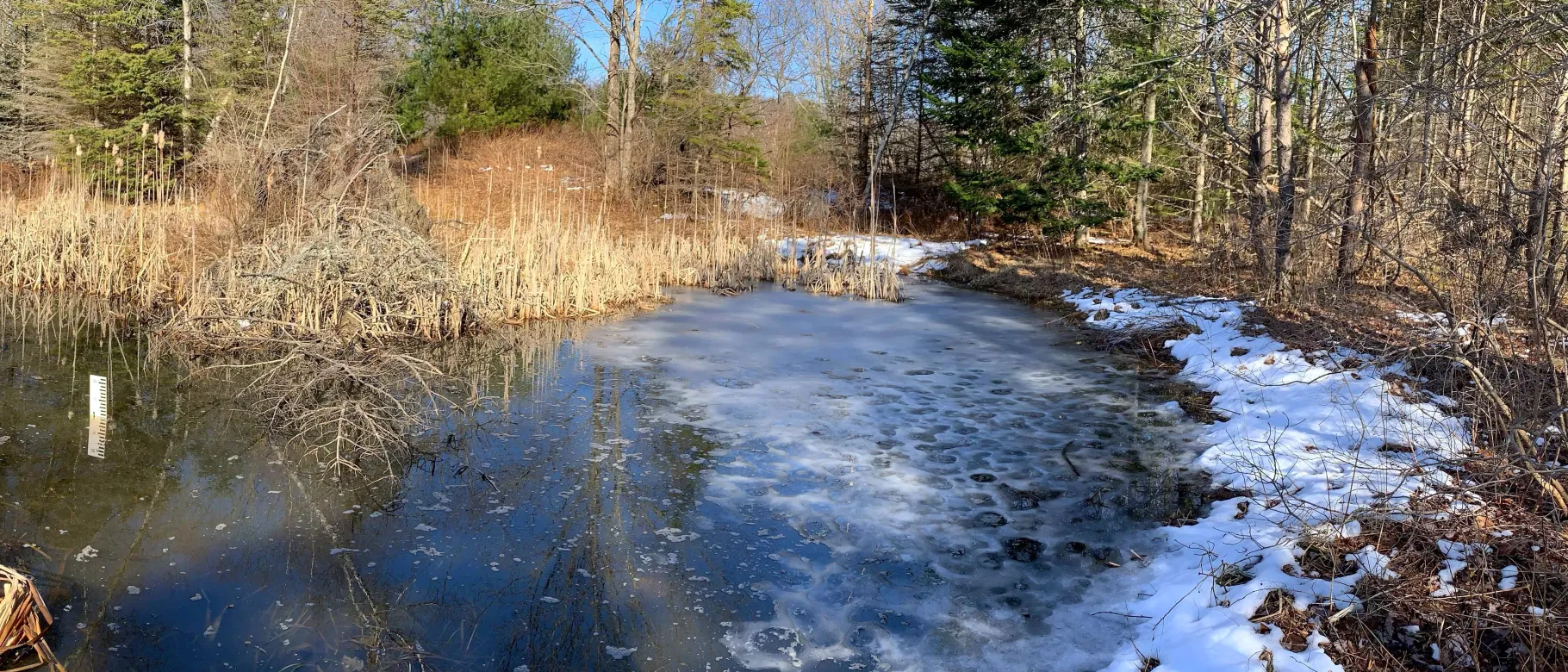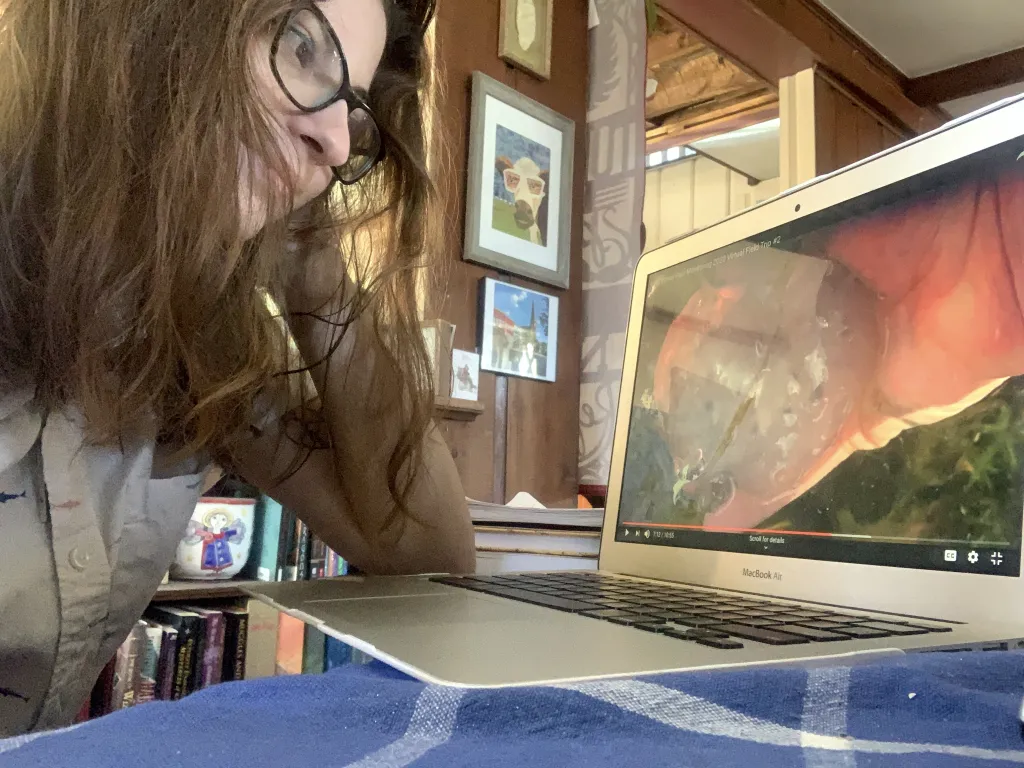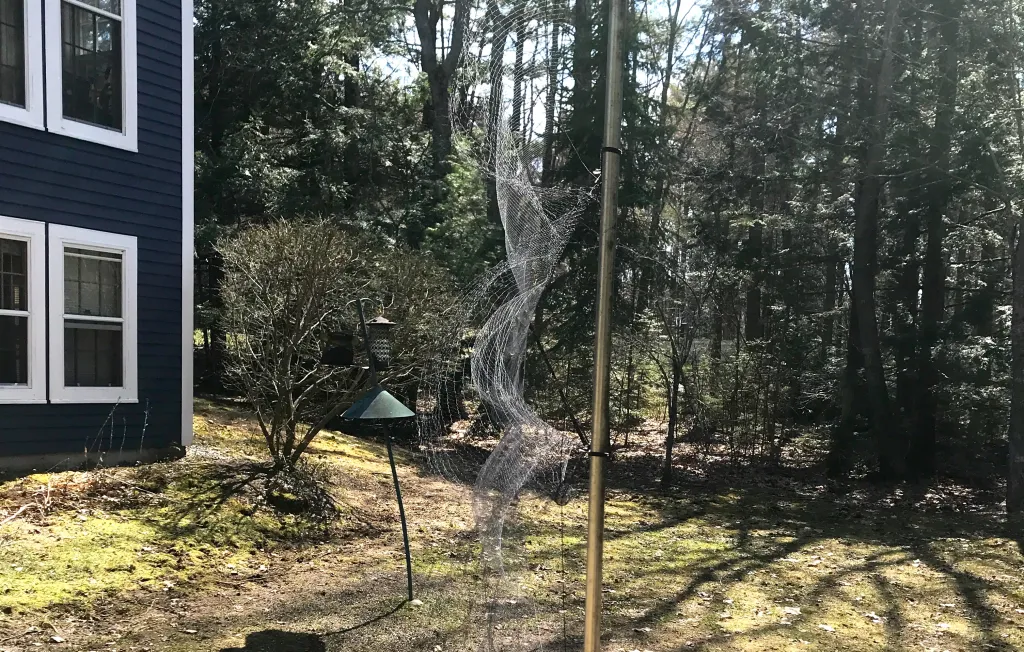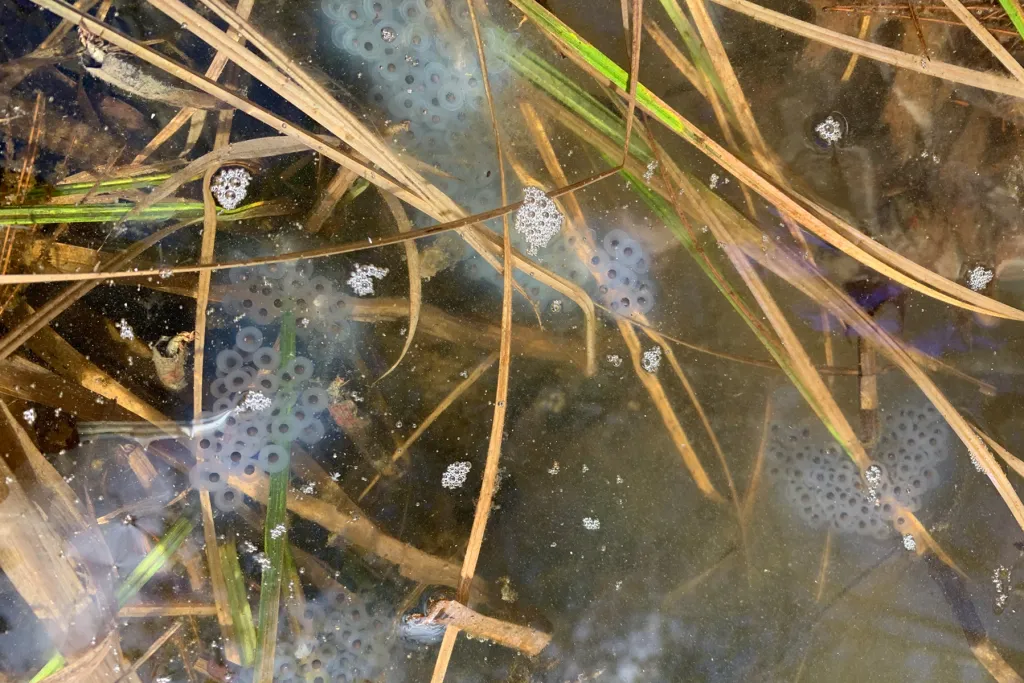Pamela Morgan spends a great deal of time in the 363-acre forest off of Route 208 in Biddeford, just steps from the University of New England’s seaside campus, where gulls cry and seals occasionally emerge from the brackish water.
Deep in the forest lies a different scene, where critters scurry about the ground and amphibians, like frogs and salamanders, flock to over a hundred vernal pools, seasonal ponds that serve as their breeding grounds.
The forest is where Morgan, Ph.D., professor of environmental studies, takes students in her Practicum in Field Ecology lab to conduct research and fieldwork on the pools. A long-term study by Morgan is examining the state of vernal pools there and measuring the impact that area development has had on them.
In a typical spring semester, students put on waders to count the number of egg masses laid by the frogs and salamanders that call the pools home. They also calculate the depth of each of the pools, take their temperatures, measure them, and record their findings to analyze the impact, if any, the pools have sustained over time.
But this semester is not typical.
Morgan continues to spend time in the forest, located behind the Harold Alfond Forum, almost daily. But this year, her students are not joining her. They are home, continuing their studies online as the coronavirus threat endures.
“We were reading papers and learning about this study for the whole first half of the semester, and the students were ready to get out into the forest, so it has been a little hard to teach without them being here,” Morgan said.
As a partial solution to the divide, and to incorporate the necessary field component of the class, Morgan has begun holding virtual field trips for her students. In each lesson, Morgan films herself on location at one or more of the vernal pools, where she details her research methods and collects data to share with her students. The field trips are posted to YouTube so that students can reference the lessons at any time and, to the best of their abilities, immerse themselves in the fieldwork.
It may not be the ideal way for students to conduct research, but it is working.
“There's nothing that replaces the hands-on, physical work — connecting your eyes and your ears and knowing the calls of the frogs — but we can still accomplish the goals of the class,” Morgan said. “The students know a lot about vernal pools by now, and they know how to collect data and how to do the research. They are also gaining skills on how to analyze the data we have already collected without actually being out in the field.”
For another course, Wetland Restoration: Science and Policy, Morgan created a short film on-site with scientists to showcase a wetland restoration project. Students in that class will complete exercises based on that film, and soon they will have the chance to network with professionals in the science community via video conferencing service Zoom.
“There are a lot of things that students have been able to get out of the classes, even without being able to go in the field,” Morgan said.
Morgan is not the only faculty member in the
Department of Environmental Studies conducting field trips online. Noah Perlut, Ph.D., associate professor and department chair, has been using Zoom to hold his Terrestrial Wildlife class and has just begun incorporating field studies into the virtual curriculum.
Perlut, who primarily studies birds, recently held his first field expedition from his own back yard. In the lesson, he demonstrated how to band birds captured on-site using a technique called mist netting.
“As we were having our Zoom class, I set up a mist net at my bird feeder, caught birds, and walked students through the process. I’m just trying to incorporate as much of the hands-on learning as I possibly can,” Perlut said.
The switch to online learning has itself been a lesson for Perlut, who thrives as an instructor in active learning settings.
“It's by far that the way that I'm most successful in teaching content for my classes,” he said.
But, like Morgan, Perlut is finding alternative ways of engaging students with the course materials, like having his students compile game animal data sets and participating in wildlife drawing activities.
For Tessa Rock (
Marine Sciences, ’22), a student in Morgan’s vernal pool practicum, the news that UNE would be shifting to online classes for the remainder of the semester was difficult to swallow.
“It was kind of heartbreaking because doing hands-on research is what we go to UNE for, and we don’t have that now,” said the New London, Connecticut native.
But through the transition, Rock has learned to find comfort in the chaos. She said Morgan’s virtual field trips are not only supplementing the learn-from-home experience, they are also easing some of the stress the coronavirus pandemic has placed upon students.
“I was watching some of the YouTube videos the other day, and I began to lose all my anxious thoughts,” Rock said. “I was just kind of focusing on what Pam was doing. I really appreciated it.”
In addition to engaging them in the course material, Morgan’s and Perlut’s efforts have helped students maintain their personal and professional connections to the professors, whom they would normally see several times each week.
Rock said Morgan’s field trips have also helped her stay connected to her true passion: nature.
“The virtual tours of the vernal pools have helped me feel more connected to the course and to the animals. In my marine lab, the closest thing I can get to interacting with the animals is seeing them swimming in an aquarium,” she said. “With Pam’s class, and with what she is able to do, we get to see what is in UNE’s backyard. It’s definitely helping me feel like I’m still getting the same education."







